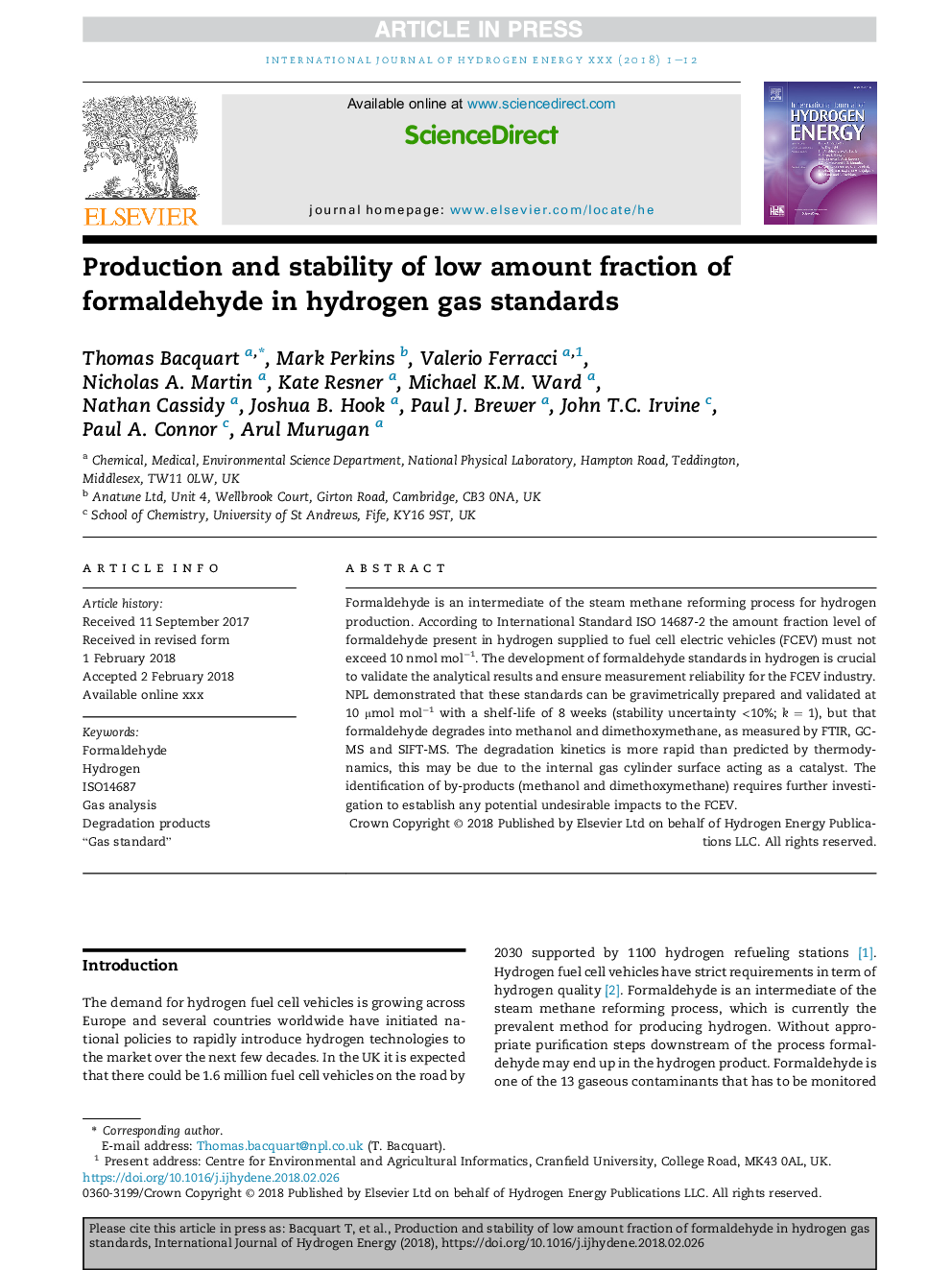| Article ID | Journal | Published Year | Pages | File Type |
|---|---|---|---|---|
| 7706927 | International Journal of Hydrogen Energy | 2018 | 12 Pages |
Abstract
Formaldehyde is an intermediate of the steam methane reforming process for hydrogen production. According to International Standard ISO 14687-2 the amount fraction level of formaldehyde present in hydrogen supplied to fuel cell electric vehicles (FCEV) must not exceed 10 nmol molâ1. The development of formaldehyde standards in hydrogen is crucial to validate the analytical results and ensure measurement reliability for the FCEV industry. NPL demonstrated that these standards can be gravimetrically prepared and validated at 10 μmol molâ1 with a shelf-life of 8 weeks (stability uncertainty <10%; k = 1), but that formaldehyde degrades into methanol and dimethoxymethane, as measured by FTIR, GC-MS and SIFT-MS. The degradation kinetics is more rapid than predicted by thermodynamics, this may be due to the internal gas cylinder surface acting as a catalyst. The identification of by-products (methanol and dimethoxymethane) requires further investigation to establish any potential undesirable impacts to the FCEV.
Related Topics
Physical Sciences and Engineering
Chemistry
Electrochemistry
Authors
Thomas Bacquart, Mark Perkins, Valerio Ferracci, Nicholas A. Martin, Kate Resner, Michael K.M. Ward, Nathan Cassidy, Joshua B. Hook, Paul J. Brewer, John T.C. Irvine, Paul A. Connor, Arul Murugan,
